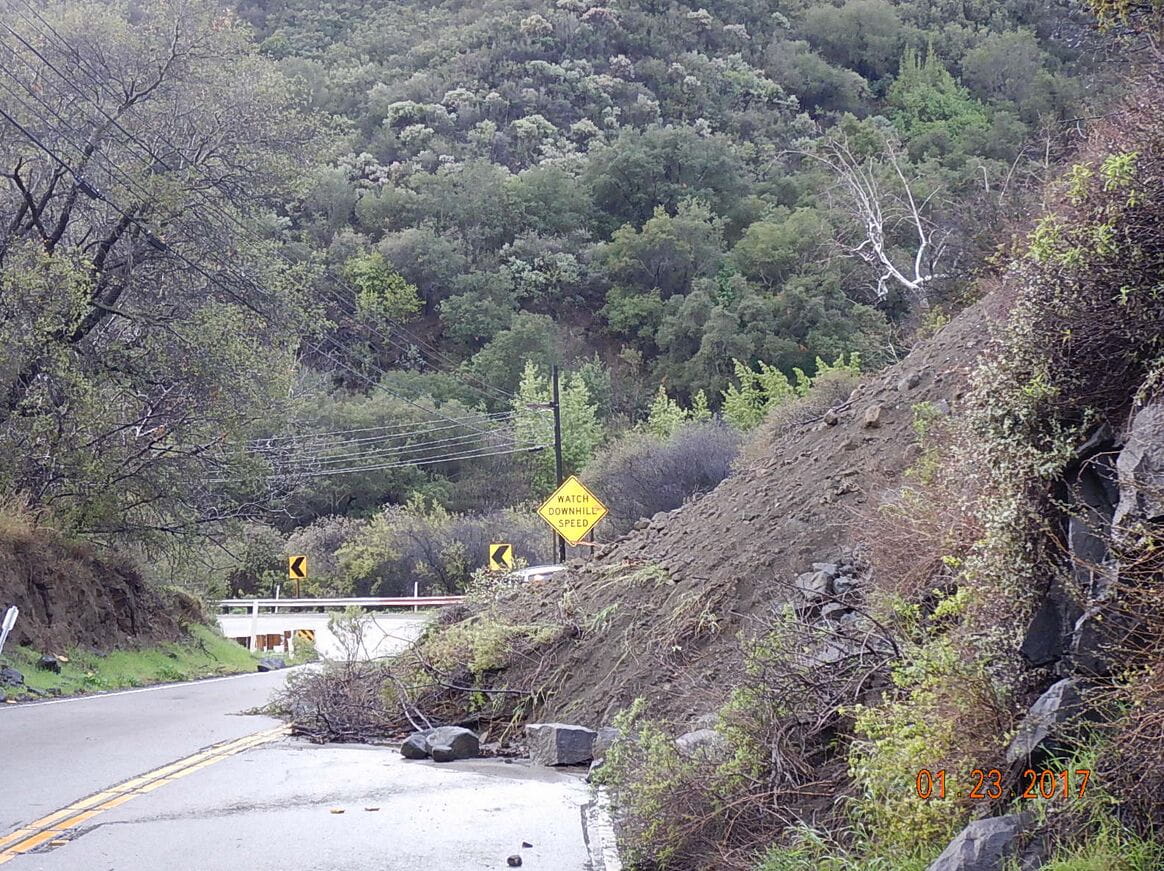
WHEN THE RAIN STOPS
Even after a storm clears and the blue sky reappears, dangers can persist. The tips below can help you avoid trouble.
Photo: Carl Grooms

Even after a storm clears and the blue sky reappears, dangers can persist. The tips below can help you avoid trouble.
Look for damage. Check hillsides for slope movement, and houses for settling and water damage.
Logs, boulders, mud and other debris can create temporary dams, which can burst days after the rain has stopped.
When driving, go slow and be particularly alert as many roads may have mud, debris, holes, and washed-out areas.
Bridges may be washed out and culverts overtopped. When you see water over a roadway, there is no way to see if the road underneath has been washed out or damaged. The water can be deeper and more powerful than you expect.
TCEP’s Emergency Status Page will list damaged or unpassable roads following a storm. Or check with the Department of Public Works.
Winter is often the best time to plant slopes, so try to anticipate rainy seasons and fix problem areas before the rains come.
Many mudslides occur as the soils dry, after an extended wet period.